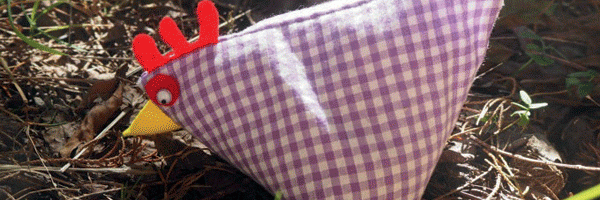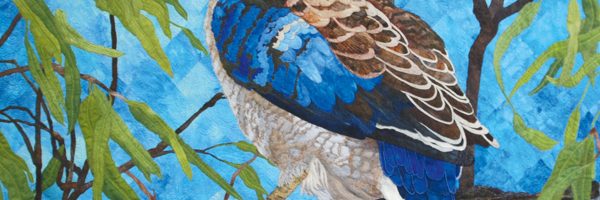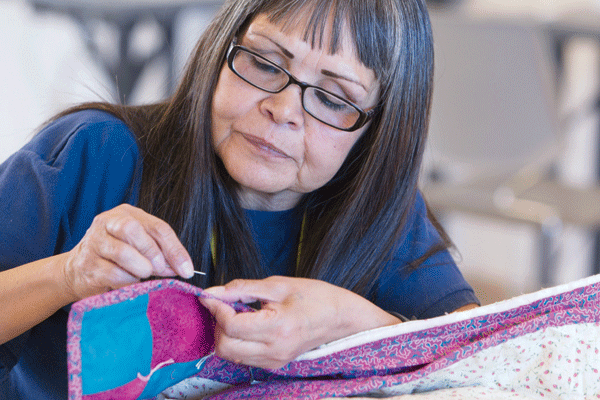
Crafting with Conviction At Coffee Creek Quilters
Forget jailbird stereotypes! We’ve discovered a new (and surprising) side to prison life. Sewing. Specialised programs (Coffee Creek Quilters) have been designed to teach handcrafts in jails, where the therapeutic qualities of craft are most called upon. With needlework supplies, guidance and encouragement, offenders are taking part in creative pursuits and filling their stretches with stitches.
By Janai Velez

“They gain a sense of connection to the world outside prison through the sale of their work. This also helps them to establish a work ethic and allows them to send money to their families or save for their release.”
“Prisoners report to feeling more confident, having more self-esteem and an increased sense of well-being … they feel a sense of pride in the work that they complete.”
WHAT THE PRISONERS SAY:
At the Coffee Creek Quilters group, common expressions are:
* “It’s the only time I feel ‘normal’.”
* “I always feel respected and valued in class.”
* “It’s the best part of the week.”
* “I love that I’m giving back to others [with the donation quilts].”
* “You give me my humanity back”.
* “It’s is a calm, supportive environment.”

FIGHTING DEPRESSION
“When you are locked up by yourself, you tend to spend the time thinking of the past and your family. As a result of this, you can become very depressed. I would recommend anyone who is feeling alone and depressed and is stuck in the prison rute to take up needlepoint, because it really can help you cope with prison life.”
– Fine Cell Work participant
Whirring of sewing machines, laughter and murmurs of seam matching and tangled threads are hardly the sounds you’d expect hear behind prison walls. Yet, offenders across the world are filling their time with soul-soothing stitching. The greatest rewards for them are the intangible ones.
Victoria Gillies, Managing Director of Fine Cell Work, a charity and social enterprise that trains male and female prisoners to do high-quality, paid, creative needlework, describes the sewing process as ‘occupational flow’.
“This occurs when one is totally involved in an activity, and the experience includes the focusing of attention on a clear goal, a loss of self-consciousness, an altered sense of time and a sense that the activity itself is rewarding.
Needlework is an ideal activity for working in a cell, because the tools required are so few. All the stitcher needs is a needle. Stitching, like any repetitive activity, is a well-known tool used in occupational therapy,” says Victoria.

Check out our sewing patterns!
Fine Cell Work operates in 31 prisons across England and Wales. Prisoners are taught in groups by volunteers and then continue their projects in their cells. “In some classes, we have stitchers who have been with us for many years, and they can work very independently, often taking on highly prestigious commission work.
Beginners join groups all the time, and they are taught very thoroughly from first principles,” Victoria explains.
Prisoners are paid an agreed flat fee for each handmade item, and these are available for purchase through the Fine Cell Work online store.
“They gain a sense of connection to the world outside prison through the sale of their work. This also helps them to establish a work ethic and allows them to send money to their families or save for their release,” says Victoria.

Over in Oregon, USA, at the Coffee Creek Correctional Facility (a women’s prison), volunteer organisation Coffee Creek Quilters runs a quilting-focused program, concurrently teaching persistence, patience and problem solving to their students.
“Many tell us that finishing their first quilt is the first time they’ve ever finished anything,” says current Instructor and former Chair of Coffee Creek Quilters Board, Mary Ann McCammon. “Quilting often gives students the confidence to try something else to improve their lives.”
Four different classes meet weekly for two hours, and students make up to three quilts each during the program (usually taking 18-24 months). The first two quilts are donated to charities, and students either keep the third or give it to a loved one. “These [third] quilts are extremely meaningful and often tell a personal story with the selection of pattern and fabric,” says Mary Ann.

Carry all your essentials in the Le Petite Fleurs Embroidery Bag
A different sort of initiative runs here in Australia. Managed by Corrections Victoria and taking place at the Ballarat Justice Service Centre, there are two sewing programs: the Soft Toy Program (not currently running) and Sit and Knit (held twice a week), which are for community-based offenders (not prisoners).
These are for women ordered by the courts to complete Community Correction Orders. Both programs were/are run by volunteers, and the toys, quilts, scarves, hats, jumpers and blankets made by participants are donated to non-profit organisation Mission Without Borders.
“Many of the participants have experienced mental illness or have a history of drug and alcohol addiction.
Programs such as the Soft Toy Program and Sit and Knit provide an important social outlet, offering a chance to interact with other women and the volunteer facilitator,” says a spokesperson for Corrections Victoria. “Teaching new skills and improving social connections also have strong rehabilitative benefits. All Community Correctional Services programs are designed so as to reduce the risk of participants reoffending, to contribute to safer Victorian communities.”

Safety and security are top priorities for all involved in these programs. At the Coffee Creek Quilters program, sewing machines, supplies and students’ projects are kept in locked cabinets while not in use. “We have figured out how to manage the inventory and counts of all tools used in the program (pins, needles, rotary cutters, etc).
Each class has a tool clerk (a prison resident), who checks out all tools and helps keep track of inventory,” says Mary Ann.
Participants are assessed before they can join any of these programs. Victoria, from the UK’s Fine Cell Work, explains that they experience very few problems with the students.
The prison system proves to be one of the greatest challenges. “We are at the mercy of prison regimes, which sometimes means that, with little or no notice, classes are cut short or do not run at all.”
For this reason, adapting with changing rules within the prison is essential, like making do in makeshift classrooms.
At the Coffee Creek Quilters, the classes take place in the minimum-security dining room at the facility. Fine Cell Work teachers have to be more resourceful.
Depending on the prison, classes can take place anywhere – a classroom in the education department or even in the corner of a prison landing.

Learn how to use appliqué and embroidery stitches!
Despite sometimes-trying circumstances, these sewing programs have flourished. Prisoners volunteer to be a part of the Fine Cell Work and the Coffee Creek Quilters programs, and there are long waiting lists for both.
“At first, they may have enjoyed the idea of being able to earn money while locked in their cells, but it soon becomes about more than money,” says Victoria, from Fine Cell Work. “Prisoners report to feeling more confident, having more self-esteem and an increased sense of well-being.
For many of our prisoners, it may be the first time that they have created something so intricate and beautiful, and they feel a sense of pride in the work that they complete. Fine Cell Work groups meet regularly, and this can give prisoners a sense of belonging and a chance to work together on group projects – something that they may never have experienced in the past.”
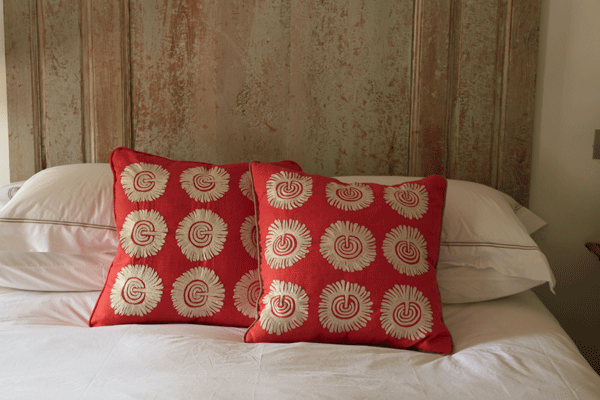
Nigel, from the UK’s HM Prison Wandsworth says, “I find I am more relaxed and tolerant in my dealings with others and would attribute this positive change to Fine Cell Work quilting … There is no doubt I find it soothing and calming in times of stress.”
Another Fine Cell Work student had similar sewing experiences. “As I started to do the work, I was aware of a feeling of calmness that I was experiencing for the first time since coming to prison.
An added bonus was getting to know the other guys doing the work; there was almost a family feeling between them in the way they helped one another and spent time actually talking about things, other than the usual prison talk.”
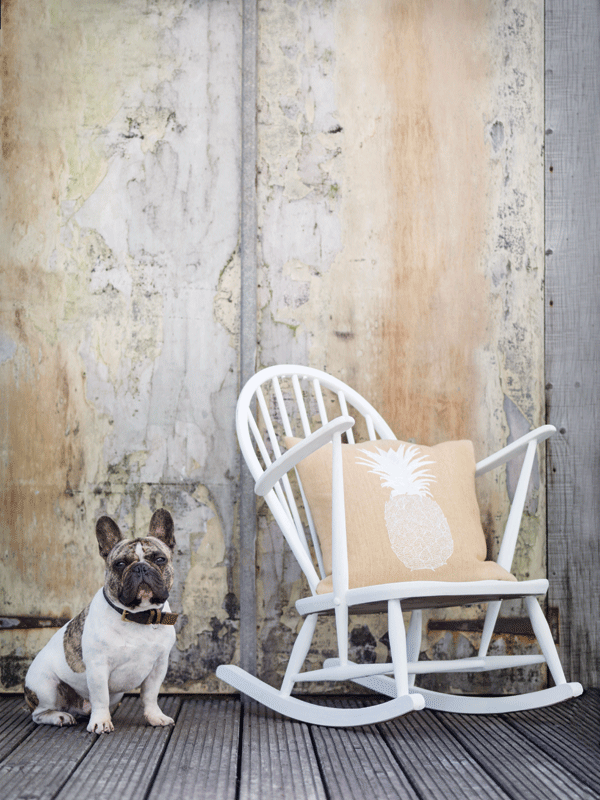
At the Coffee Creek Quilters group, common expressions are: “It’s the only time I feel ‘normal’; It’s is a calm, supportive environment; It’s the best part of the week; I love that I’m giving back to others [with the donation quilts]; I always feel respected and valued in class.” As one woman says, “You give me my humanity back”.
The Soft Toy Program and Sit and Knit have both received lots of positive feedback. A spokesperson for Corrections Victoria says that participants are using their new skills to make toys, quilts and clothing in their own time. “Many have returned to the Ballarat Justice Service Centre to proudly show off some of their hand-crafted creations.”

These creative classes offer so much more than sewing skills – they offer the warmth of companionship and conversation, and they help stitch lives back together and create tight-knit communities. They’re a place where, at least temporarily, the greatest troubles to be had are unmatched seams and tangled threads. And they’re not jailing offences!
Contacts
Coffee Creek Quilters: Visit www.coffeecreekquilters.org or email coffeecreekquilters@gmail.com.
Corrections Victoria: Visit www.corrections.vic.gov.au.
Department of Justice and Regulation (Victoria): Visit www.justice.vic.gov.au.
Fine Cell Work: Visit www.finecellwork.co.uk and shop.finecellwork.com.

